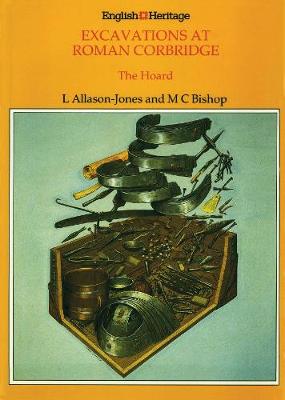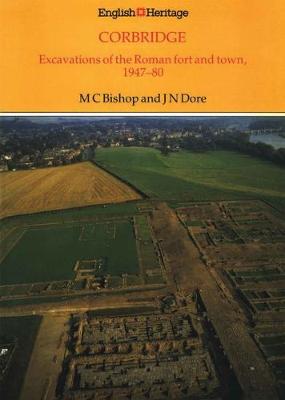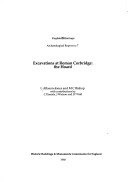English Heritage Archaeological Report
2 primary works • 3 total works
Book 7
During the examination of a sequence of timber forts underlying the third century military base at the Roman site of Corbridge, the remains of an iron-bound wooden chest was uncovered. Although much of the wood and other organic remains had rotted away, the contents, a remarkable hoard of metalwork and other finds, are described in this book. The finds, catalogued and illustrated in detail, include portions of at least six segmental cuirasses (lorica segmentata), spearheads, ballista bolts, and a scabbard. Other less military finds included a pulley block, pickaxe, saws, shears, as well as wooden objects such as cylindrical box and a tankard. The chest may have therefore contained an armourer’s hoard of scrap metal and other useful items – many of them already damaged – buried possibly on the abandonment of the fort between AD 122 and 138.
Book 8
Corbridge, some 4km south of Hadrian’s Wall, was the site of an important Roman river crossing. From the mid 80s to about 160s AD this was protected by a series of forts which underlie the remains of the later garrison town now visible on the site. This volume presents the results of excavations carried out between 1947 and 1980 beneath and around the later masonry buildings which have helped to reveal the complex history of the sequence of mainly earth and timber forts which preceded them.
After an introduction which describes how the analysis of excavation data collected over many seasons’ work has been undertaken, and summarising previous work on the site, a major new consideration of the crop mark evidence for the site is presented. There follows an examination of the site, covering the fort buildings area by area – principia, praetorium, barracks, defences, and other areas. The evidence is complex, and the separate phases of development of each area are fully illustrated.
A selection of finds, illustrated in details and chosen for their stratigraphic relevance or intrinsic value, is studied in a series of specialist reports. The conclusion explores a new interpretation of the earlier phases of fort occupation at Roman Corbridge.
After an introduction which describes how the analysis of excavation data collected over many seasons’ work has been undertaken, and summarising previous work on the site, a major new consideration of the crop mark evidence for the site is presented. There follows an examination of the site, covering the fort buildings area by area – principia, praetorium, barracks, defences, and other areas. The evidence is complex, and the separate phases of development of each area are fully illustrated.
A selection of finds, illustrated in details and chosen for their stratigraphic relevance or intrinsic value, is studied in a series of specialist reports. The conclusion explores a new interpretation of the earlier phases of fort occupation at Roman Corbridge.
No 7


